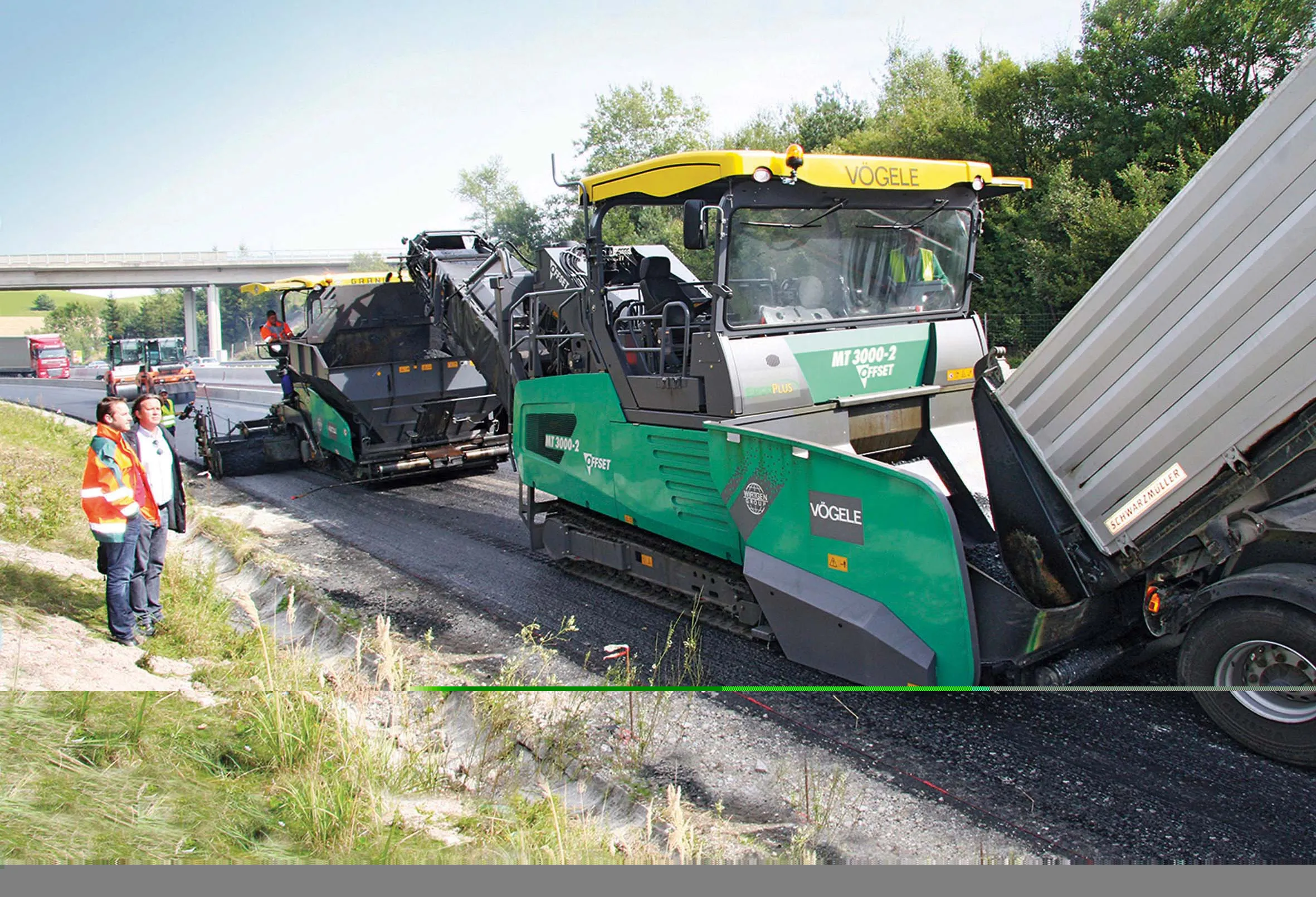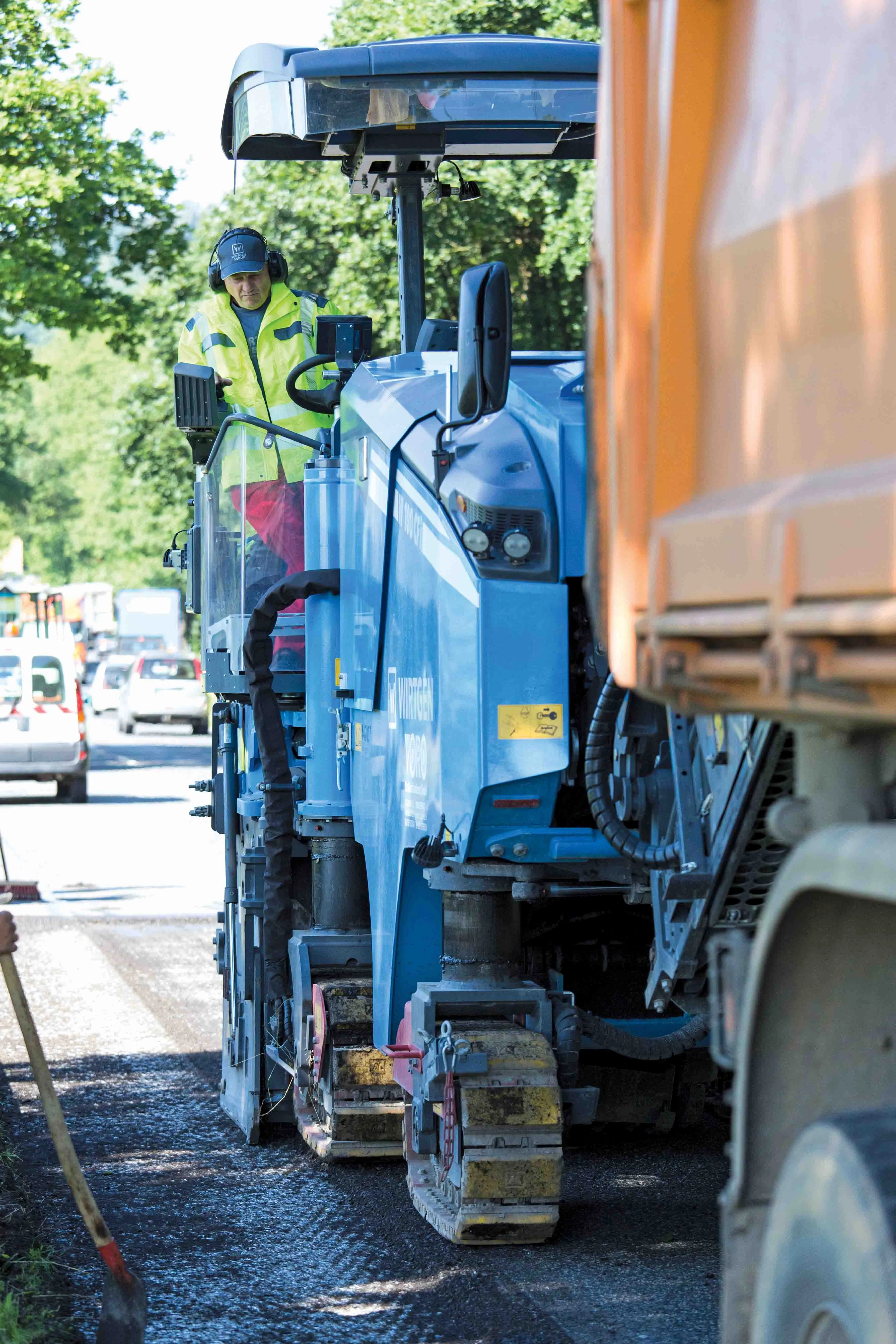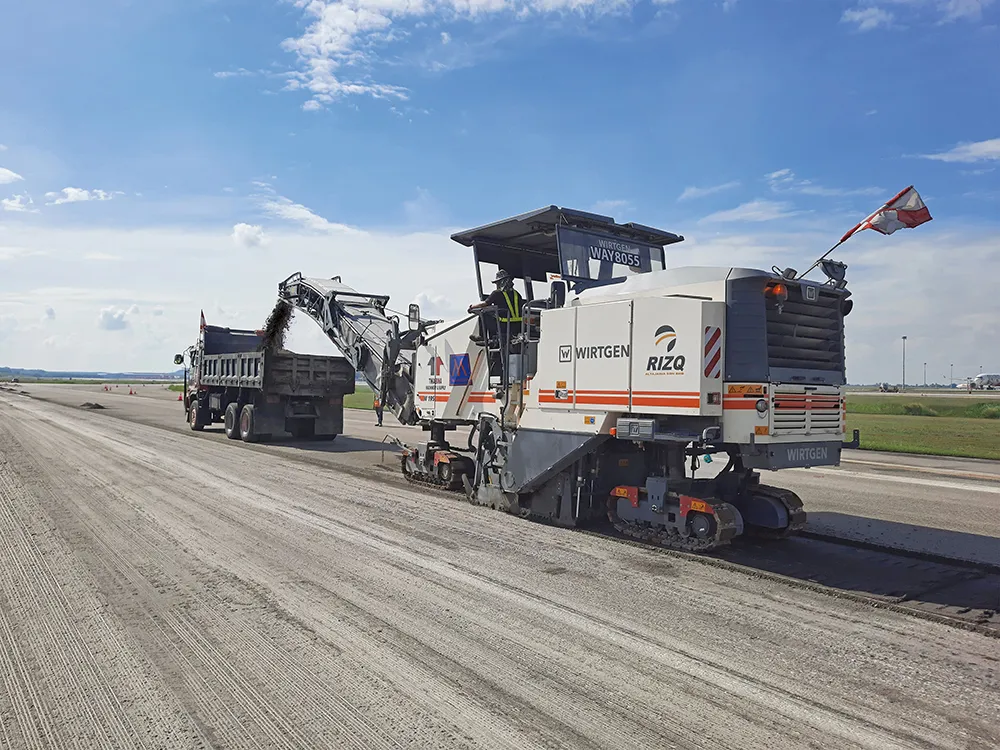Road construction work with moving traffic always represents a major challenge. This is especially true when only one lane can be closed, consequently leaving little space for working and manoeuvring. That was exactly the case for a rehabilitation project on the A2 motorway in Austria between Vienna and Graz near Schäffern. However, the job was further complicated by another factor: all access roads to the job site were roughly 1km apart.
Ensuring an uninterrupted supply of mix to the paver under these
May 14, 2014
Read time: 3 mins

Road construction work with moving traffic always represents a major challenge. This is especially true when only one lane can be closed, consequently leaving little space for working and manoeuvring. That was exactly the case for a rehabilitation project on the A2 motorway in Austria between Vienna and Graz near Schäffern. However, the job was further complicated by another factor: all access roads to the job site were roughly 1km apart.
Ensuring an uninterrupted supply of mix to the paver under these adverse conditions required perfect job site logistics and optimum material management. Furthermore, the specifications for evenness were strict as the Austrian road construction guidelines and regulations only permitted minor deviations. The solution: a non-stop supply of mix with a material feeder. The consortium awarded the contract,2841 ARGE A2 Zöbern-Pinggau, comprising construction firms Bauunternehmung Granit Gesellschaft and 7019 Swietelsky Baugesellschaft, opted to use the 1194 Vögele PowerFeeder MT 3000-2 Offset with pivoting conveyor.
Paired with the SUPER 1900-2, the Vögele PowerFeeder demonstrated its high importance for the pavement quality. It received the mix from lorries and continuously transferred it to the paver without physical contact, while the lorries navigated the job site. Thanks to the feeder’s high capacity (together with the paver’s material hopper, it can accommodate the entire load of a 25tonne lorry), the feeder always carried enough mix to permit an uninterrupted flow of material to the paver, effectively preventing the formation of humps when resuming paving after a break.
The paver operator and screed operator were able to concentrate fully on the asphalt paving work, while one lorry after another drove in reverse for up to 1km to dump mix into the feeder’s receiving hopper. Equipped with an AB 500 TV Extending Screed, the SUPER 1900-2 placed two layers of asphaltic concrete, 7 and 7.5cm thick, for the binder course. The first layer served for level regulation, which was necessary in this location. The second layer was followed by a 3.5cm surface course of stone mastic asphalt. The pave width varied from 4.75m to 6m.
Site Manager Harald Zippe, from construction firm Granit, said his operating personnel found using the new MT 3000-2 Offset “child’s play”. He continued, “Basically, the machine functions very similarly and just as intuitively as a Vögele paver thanks to the standardised ErgoPlus operating system. Our team also really liked the joystick for controlling the pivoting conveyor.” The operator uses the joystick not only to move the pivoting conveyor, but also to control the speed of the conveying process.
The verdict after completion of the project was absolutely unequivocal. “We achieved an outstanding degree of evenness thanks to the material feeder,” said Zippe. “We were easily able to meet the client’s strict quality requirements.” One further advantage was the avoidance of idle time among job site personnel, thus reducing the time needed for the actual paving work. The team was able to work continuously from 7 am until 4 pm. “That made it easier to comply with the tight schedule, and likewise made a key contribution to the outstanding results,” added Zippe.
Ensuring an uninterrupted supply of mix to the paver under these adverse conditions required perfect job site logistics and optimum material management. Furthermore, the specifications for evenness were strict as the Austrian road construction guidelines and regulations only permitted minor deviations. The solution: a non-stop supply of mix with a material feeder. The consortium awarded the contract,
Paired with the SUPER 1900-2, the Vögele PowerFeeder demonstrated its high importance for the pavement quality. It received the mix from lorries and continuously transferred it to the paver without physical contact, while the lorries navigated the job site. Thanks to the feeder’s high capacity (together with the paver’s material hopper, it can accommodate the entire load of a 25tonne lorry), the feeder always carried enough mix to permit an uninterrupted flow of material to the paver, effectively preventing the formation of humps when resuming paving after a break.
The paver operator and screed operator were able to concentrate fully on the asphalt paving work, while one lorry after another drove in reverse for up to 1km to dump mix into the feeder’s receiving hopper. Equipped with an AB 500 TV Extending Screed, the SUPER 1900-2 placed two layers of asphaltic concrete, 7 and 7.5cm thick, for the binder course. The first layer served for level regulation, which was necessary in this location. The second layer was followed by a 3.5cm surface course of stone mastic asphalt. The pave width varied from 4.75m to 6m.
Site Manager Harald Zippe, from construction firm Granit, said his operating personnel found using the new MT 3000-2 Offset “child’s play”. He continued, “Basically, the machine functions very similarly and just as intuitively as a Vögele paver thanks to the standardised ErgoPlus operating system. Our team also really liked the joystick for controlling the pivoting conveyor.” The operator uses the joystick not only to move the pivoting conveyor, but also to control the speed of the conveying process.
The verdict after completion of the project was absolutely unequivocal. “We achieved an outstanding degree of evenness thanks to the material feeder,” said Zippe. “We were easily able to meet the client’s strict quality requirements.” One further advantage was the avoidance of idle time among job site personnel, thus reducing the time needed for the actual paving work. The team was able to work continuously from 7 am until 4 pm. “That made it easier to comply with the tight schedule, and likewise made a key contribution to the outstanding results,” added Zippe.









